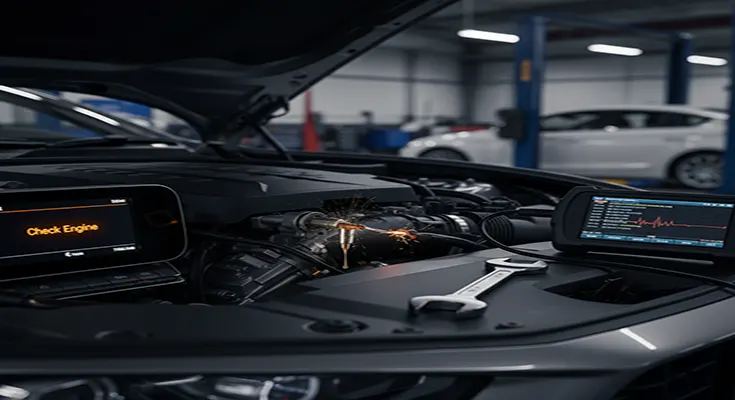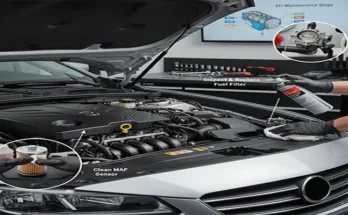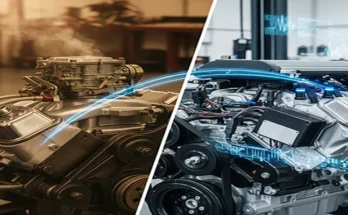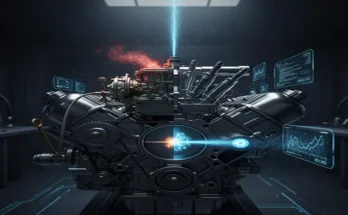The Electronic Fuel Injection (EFI) system is the brain and brawn of a modern engine’s fuel delivery, precisely metering fuel into the combustion chamber. When this intricate system malfunctions, your vehicle will exhibit unmistakable symptoms—from rough idling and poor acceleration to a dreaded illuminated Check Engine Light.
Understanding the common problems and their corresponding fixes is essential for maintaining a smooth, efficient, and reliable ride.
1. Clogged or Dirty Fuel Injectors
Fuel injectors are fine nozzles that spray an atomized mist of fuel into the engine. Over time, carbon, varnish, and debris from fuel can build up, restricting the spray pattern or flow.
| Symptoms | Cause | The Fix |
| Engine Misfires/Rough Idle: The engine runs inconsistently, shaking or vibrating, especially at a stop. | Deposits restrict the fuel flow, leading to an incorrect air-fuel ratio in one or more cylinders. | Fuel System Cleaning: Use a high-quality fuel system cleaner added to the gas tank. For severe clogs, professional ultrasonic cleaning or replacement of the affected injectors is necessary. |
| Poor Acceleration/Power Loss: The engine hesitates when you press the gas pedal. | Insufficient fuel is delivered under load, starving the engine of power. | Regular use of a quality fuel system additive can prevent future buildup. |
| Black Smoke from Exhaust: | An injector is leaking too much fuel (“rich” mixture). | Replace the faulty injector or its internal components. |
2. Failing Fuel Pump
The fuel pump is responsible for drawing fuel from the tank and supplying it to the injectors at a very high, consistent pressure. A weak or failing pump cannot maintain this pressure, starving the engine.
| Symptoms | Cause | The Fix |
| Difficulty Starting/No-Start: The engine cranks but won’t catch, or takes multiple attempts to start. | The pump is too weak or not running at all, meaning no fuel pressure is reaching the engine. | Fuel Pressure Test: Use a pressure gauge to compare the actual pressure against the manufacturer’s specification. If low, replace the fuel pump module. |
| Engine Stalling at High Temperatures: The pump overheats and temporarily fails. | A worn-out pump motor or electrical fault. | Check the fuel pump fuse and relay first. If both are good, the pump likely needs replacement. |
| Whining Noise from the Fuel Tank: | The pump is struggling to pull fuel or is failing mechanically. | Replacement is typically required, as a whining noise often indicates permanent wear. |
3. Leaking Fuel Injectors or Lines
Fuel leaks are dangerous and detrimental to engine efficiency. Leaks can occur at the injector seals (O-rings) or from a cracked fuel line due to age and heat.
| Symptoms | Cause | The Fix |
| Strong Smell of Gasoline: A distinct fuel odor, often strongest right after starting. | Damaged O-rings or cracked fuel lines allow raw fuel vapor to escape. | Replace Seals and Lines: Inspect the injectors for traces of fuel around the housing. Replace the injector O-rings and any damaged fuel lines immediately. |
| Hard Starts (Especially When Hot): Fuel pressure bleeds down when the car is off, requiring the pump to re-prime the system excessively. | A leaking injector allows fuel pressure to drop too quickly when the engine is shut off. | Professional inspection to pinpoint the exact source of the leak and replace the faulty component. |
| Oil Dilution (Fuel in Oil): (Severe cases) | A leak in a non-running cylinder allows fuel to wash past the piston rings. | Immediate repair and an oil change, as fuel dilutes the oil’s lubricating properties. |
4. Faulty Sensors and Electrical Issues
The EFI system relies on various sensors to tell the Engine Control Unit (ECU) how much fuel to inject.11Corroded wiring or a malfunctioning sensor will lead to an incorrect air-fuel mixture.
| Symptoms | Cause | The Fix |
| Check Engine Light (CEL) is On: Often accompanied by a Diagnostic Trouble Code (DTC). | A sensor is sending incorrect data (e.g., Oxygen Sensor, Mass Air Flow (MAF) Sensor, or Throttle Position Sensor (TPS)). | Scan for Codes: Use an OBD-II scanner to read the specific fault code. Replace the faulty sensor or repair the broken wire. |
| Poor Fuel Economy: The engine is running too “rich” (too much fuel). | A faulty O2 sensor or MAF sensor may incorrectly tell the ECU the engine needs more fuel than it does. | Test the sensor readings using a scan tool. A faulty sensor needs to be replaced to restore proper mixture control. |
| Engine Will Not Start (No Injector Click): | The ECU is not sending the electrical pulse to open the injectors due to a bad wire or relay. | Check the fuel injector fuse and relay. Use a Noid Light or a mechanic’s stethoscope to confirm the injector is receiving its electrical pulse. Repair or replace the wiring harness or relay. |
Maintenance Tips to Prevent EFI Problems
The electronic fuel injection system is designed to be highly reliable, but it requires basic preventative care:
- Change the Fuel Filter: The fuel filter catches contaminants before they reach the highly sensitive injectors. Replace it according to your vehicle’s maintenance schedule.
- Use Quality Fuel: Low-grade fuel can leave behind deposits that clog injectors. Using top-tier gasoline helps keep the system clean.
- Regular Diagnostics: If your vehicle throws a Check Engine Light, have the code read immediately. Early diagnosis can prevent a small issue from causing expensive damage.
Add Fuel System Cleaner: Periodically (e.g., every oil change), add a concentrated fuel injector cleaner to your gas tank to help dissolve minor deposits before they become clogs.





